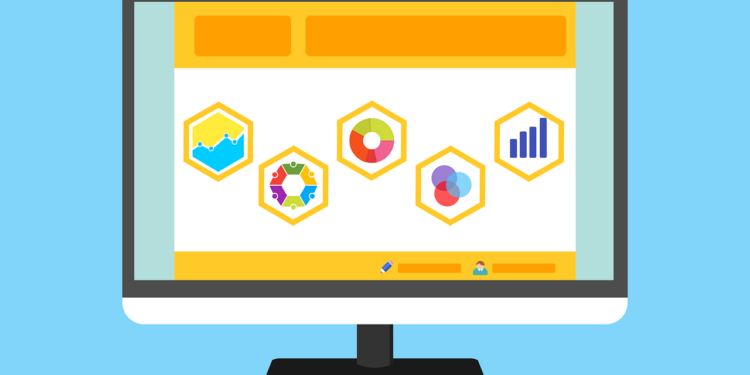So, you’re building your business website! Exciting, isn’t it? But as thrilling as it might be, it’s also a daunting task. It’s more than just selecting attractive images and writing catchy phrases. Your website should be the face of your business, a guidepost for your potential customers. Don’t worry; this blog post is here to help you understand the essentials of creating a website that truly defines you and your business! Let’s dive in.
Get Good Hosting
Good hosting is the backbone of your website, directly influencing its performance and, thus, user experience. It ensures your website loads quickly, is available round-the-clock, and can handle peak traffic without crashing. Reliable hosting providers also ensure you can register a new domain name of your choice without any limitations. Additionally, they offer robust security measures to protect your site from cyber threats. This is crucial as any downtime, slow speed, or security breaches can not only frustrate visitors but also harm your search engine ranking.
Moreover, good hosting provides crucial support services, helping you to resolve any technical issues promptly. Remember, your website is the online face of your business. Ensuring its smooth operation with a good hosting service is key to maintaining a professional image and keeping your customers happy and engaged.
Define Your Purpose and Goals
Defining your website’s purpose and goals is a foundational step in the web development process. This is because your website serves as a digital storefront, and the clarity of its purpose directly impacts how effectively it attracts, informs, or converts visitors. Each page should have a clear objective, whether it’s providing information about your products or services, driving visitor sign-ups, or facilitating sales.
Clear goals guide the design and content of your website, ensuring that every element serves a specific purpose. This leads to a cohesive, user-friendly experience that aligns with your business objectives. Furthermore, setting measurable goals allows you to track your website’s performance over time and make necessary adjustments to improve its effectiveness. In essence, defining your purpose and goals provides direction, enhances user experience, and ensures that your website truly serves as a valuable tool in achieving your business objectives.
Understand Your Target Audience
Knowing who you’re sending your messages to is pivotal for building a successful website. This comprehension allows you to tailor the design, functionality, and content of your site to meet the specific needs and preferences of your audience. For instance, if your target crowd is millennials, integrating social media functionalities and a mobile-friendly design would be beneficial. Equally important, understanding your audience’s pain points can help you address them directly through your website’s content, making it more relatable and engaging.
This insight also assists in creating a personalized user experience, which can improve user engagement and conversion rates. Furthermore, understanding the language, tone, and communication style that resonates with your audience enables you to craft a website narrative that is compelling and effective. Essentially, a thorough understanding of your target audience ensures that your website is not just user-friendly but user-centric, playing a critical role in enhancing its overall effectiveness.
Choose a User-friendly Design
People nowadays are far less patient, especially when it comes to the internet, so a website that’s compatible with their needs is the right way to keep them interested. Here are some tips to make your page more user-friendly:
- Intuitive navigation
- Responsive design
- Clear calls-to-action
- Readable typography
- Optimize loading times
- Minimize clutter
- Consistent branding
- Accessible design
- Quick contact information
- Feedback and validation
- Fast and easy checkout
- A/B testing
This kind of design simplifies navigation, facilitates accessibility, and enhances the overall user experience. With a user-friendly design, visitors can easily find the information they need, leading to higher satisfaction levels, increased conversion rates, and improved brand perception.
Focus on Content Quality
Content is the aspect of your site that communicates your brand’s value proposition, provides beneficial information to your audience, and influences their perception of you. High-quality, relevant, and engaging content not only captivates visitors but also encourages them to interact with your website, potentially leading to conversions. Moreover, quality content is a key factor in SEO. It helps your website rank higher in search engine results, increasing your visibility, attracting more organic traffic, and enhancing your credibility.
Additionally, providing consistent quality content fosters trust and loyalty among your audience, leading to repeat visits and long-term customer relationships. In essence, focusing on content quality improves user experience, amplifies your online presence, and drives business success.
Optimize for Search Engines
Search engine optimization (SEO) improves your site’s visibility, helping it to rank higher in search engine results. When your website appears on the first page of results, it attracts more organic traffic and broadens your reach to potential customers. SEO also enhances user experience, as search engines favor websites that are user-friendly, mobile-optimized, and fast-loading. Furthermore, optimized content with relevant keywords helps search engines understand your site, improving its relevancy to user searches.
Lastly, SEO is a cost-effective marketing strategy, yielding a higher return on investment compared to paid advertising. In summary, SEO is not just about search engines, but it’s about making your website better for your users, increasing visibility, and driving business growth.
Integrate Social Media
Social media promotion creates a seamless connection between your website and your accounts, facilitating easy sharing and increasing your content’s reach. Notably, social media integration acts as a credibility marker, enhancing customer trust and promoting community building. Users can engage with your brand on both platforms, leading to a more dynamic and interactive experience.
Also, it can improve your SEO efforts, as social signals are considered in search engine rankings. Furthermore, it provides valuable insights into your audience’s behaviors and preferences, enabling you to fine-tune your strategies. Therefore, integrating social media is crucial for a comprehensive, effective, and interactive online presence.
So, there you have it! By following these essential steps, you’ll be well on your way to creating a business website that not only looks great but performs amazingly, too. Remember, your website is a reflection of your business, so make sure it’s a great one. Keep refining, learning, and adjusting. Good luck on your website-building journey!



























































































